The controversy over the chronic form of Lyme disease
- Published
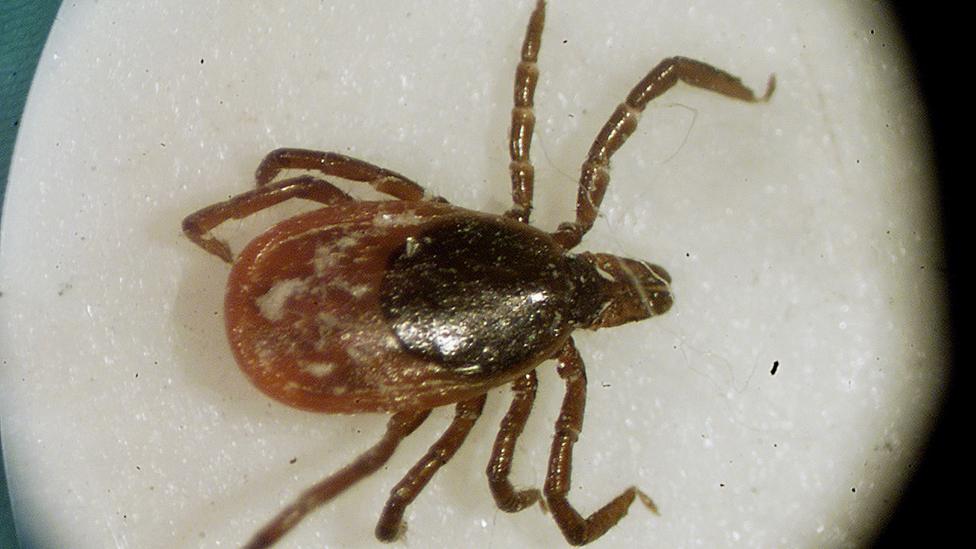
Lyme disease is increasing in the UK. But there is huge controversy over the existence of a chronic form of the disease that resists treatment.
Lyme disease is a bacterial infection that is spread to humans by a bite from an infected tick. The symptoms tend to start with a distinctive rash shaped like a bullseye. Not everyone gets one and this can make diagnosis tricky.
Early symptoms include tiredness and muscle aches. But if left untreated the disease can cause, external pain in the joints, paralysis of facial muscles, mental confusion and heart problems.
Cases of the bacteria quadrupled between 2000 and 2011, external, although some of that increase may be down to better reporting. But the NHS estimates, external there are now up to 3,000 cases of Lyme disease a year in England and Wales.
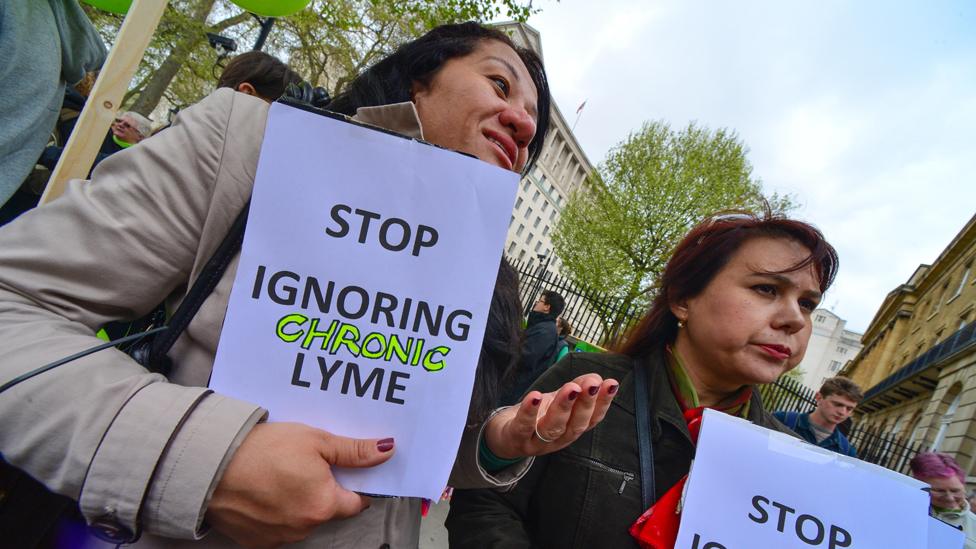
Lyme disease sufferers protest in front of Downing Street, May 2013
Recently, a number of high-profile people have been complaining that they have a chronic form of the disease that resists treatments and persists with severe symptoms - but such a condition is not widely accepted by doctors. Others have talked about Lyme disease being under-diagnosed or being the root cause of other illnesses.
It has been called the "most significant threat to human health" by billionaire Phones 4U founder John Caudwell who says his family has suffered with the disease for years.
The model Bella Hadid has also been revealed to have the disease. Her mother Yolanda Foster documents her struggle, external to find a cure for the "chronic" infection on Instagram, frequently posting pictures of herself taking alternative treatments.
But the idea of a Lyme infection that is not completely treated and lingers for years is controversial. Most doctors say that the vast majority of people with the disease, if caught early, can be treated completely with just a short course of antibiotics. "There is no consensus over whether chronic Lyme actually exists," says Matthew Dryden, a consultant microbiologist at Public Health England's Rare and Imported Pathogens Laboratory (RIPL).
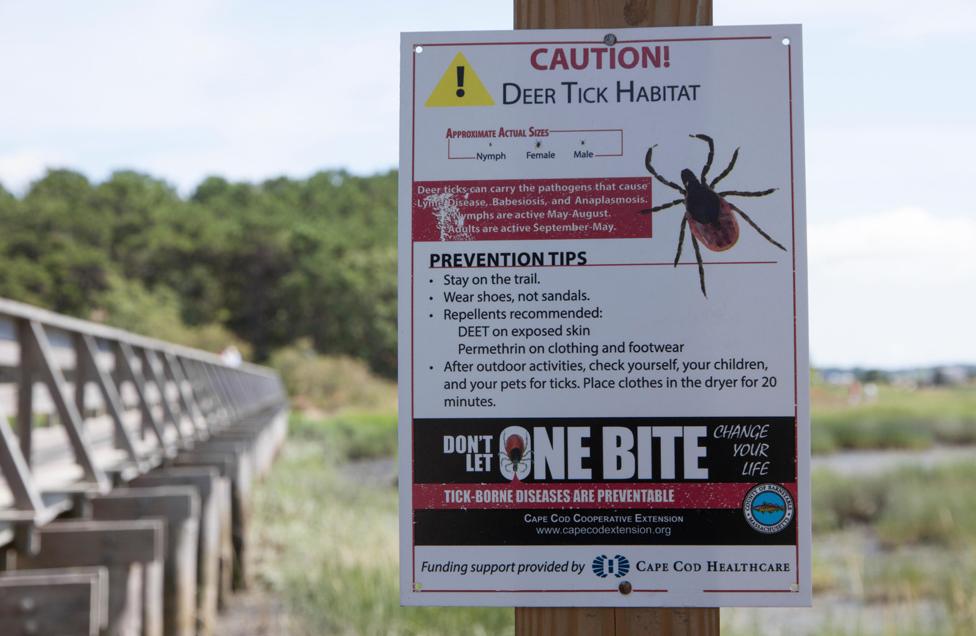
The sceptical view is that "chronic Lyme disease" is a term that has sprung up in the US and is used inaccurately to cover a wide range of vague symptoms that are not all related to a Lyme infection. The other view is that it's a debilitating illness that is misunderstood and requires years of antibiotics to treat.
The real picture may be somewhere in between, says Dryden. In the UK, there has been a gradual recognition that a minority of Lyme disease patients do develop long-term symptoms, especially if there has been a delay in treating the infection. But the jury is still out on the cause and how best to treat them.
Helen Rowe is one such patient. She was a staff nurse with the NHS who was bitten in July 2008 and developed a circular rash. Rowe says she was given inadequate antibiotics at the time and that the "bacteria reared its ugly head" a year later. By then she had pages of neurological symptoms. "My brain just wouldn't work," she says. "I would say 'go and sit on the shed', instead of go and sit on the sofa."
Her blood test for Lyme disease came back positive but other diseases were also suspected and the result was not followed up. It took another five years before she was diagnosed by the NHS and could begin treatment. After three weeks of intravenous antibiotics she began to improve.
But now that her treatment has finished, Rowe says she still has symptoms. "I don't think you really get rid of it," she adds. "I don't know whether it's active or just dormant. I don't know if this is just the 'post' side of it."
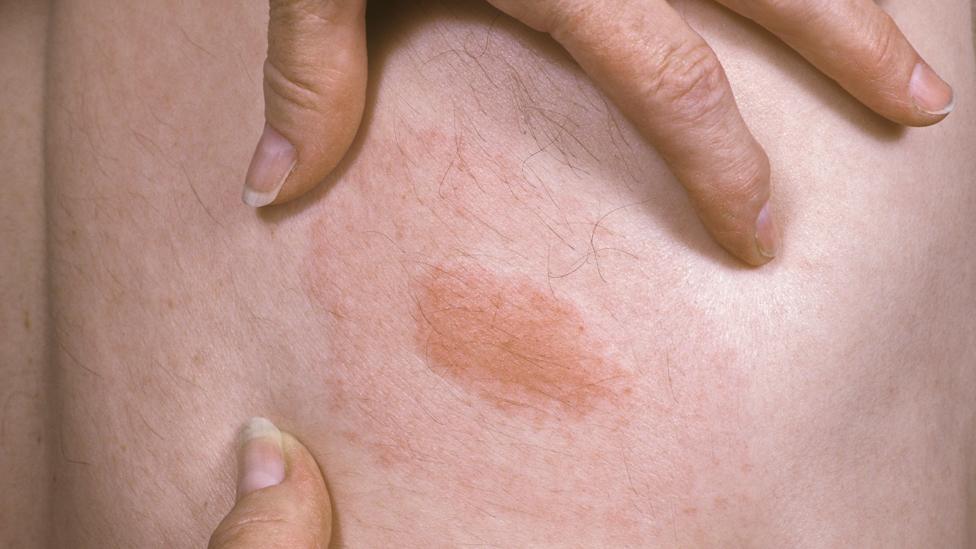
Target rash is a symptom of Lyme disease
The "post side" means Post-Treatment Lyme Disease Syndrome, external which is the medical term for describing lingering symptoms including fatigue and joint pain after treatment for confirmed Lyme disease. Its symptoms are seen by some as similar to those of Chronic Fatigue Syndrome, also known as Myalgic Encephalomyelitis (ME), and as little understood.
But some people do not like the term. "In including the word 'post' it implies this is a syndrome following Lyme disease - ie that the disease itself has been cured," says Stella Huyshe-Shires, director of Lyme Disease Action UK.
She argues that people can instead have a persistent infection. It took three years for her to get her diagnosis after being bitten by a tick in 1999. Her blood tests still show an immune response to Lyme disease. But it's not possible to use those tests to tell the difference between past exposure to the bacteria or a current illness.
It's hard to convince people that they have been fully treated when they are still feeling unwell, especially if the possibility of Lyme disease cannot be ruled out completely. The bacteria do have ways of evading the immune system and - albeit rarely - they can cause a low-grade local infection if the treatment was not good enough or was started too late, explains Tim Brooks, head of the Rare and Imported Pathogens Laboratory.

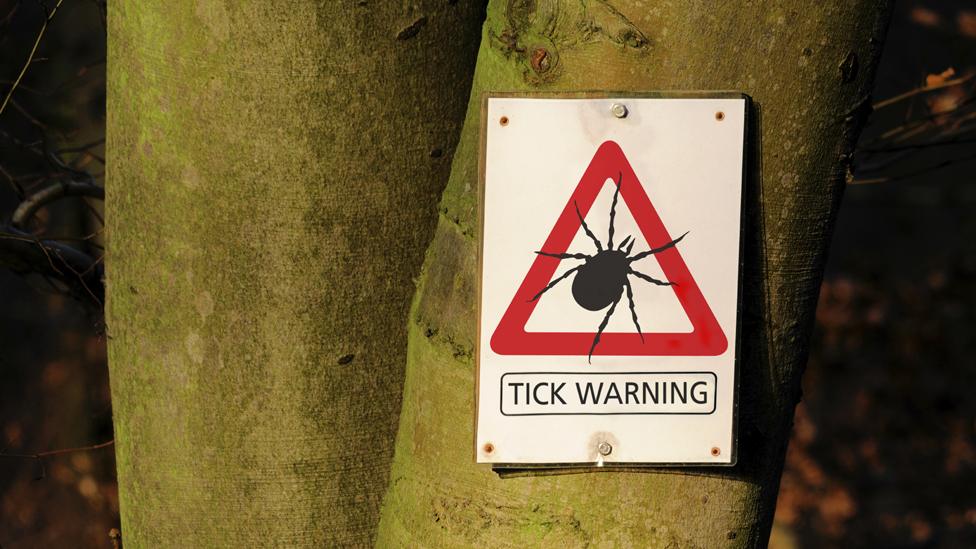
How to reduce the risk from Lyme disease
Keep to footpaths and avoid long grass when out walking
Wear appropriate clothing in tick-infested areas (a long-sleeved shirt and trousers tucked into your socks)
Wear light-coloured fabrics that may help you spot a tick on your clothes
Use insect repellent on exposed skin
Inspect your skin for ticks, particularly at the end of the day - remove any ticks you find promptly
Check your children's head and neck areas, including their scalp
Make sure ticks are not brought home on your clothes
Check that pets do not bring ticks into your home in their fur

There are also reports of various types, external of bacterial "persistor cells" that can survive antibiotic treatment, although whether they actually make someone ill is not known.
But long-term symptoms do not have to be from active Lyme disease. They could also be caused by tissue damage and problems with the immune system that were triggered by the previous infection.
There are plenty of diseases that can, rarely, lead to similar long-term symptoms from flu to glandular fever. "That's the mystery of these chronic symptoms that can be triggered by all sorts of infections," says Dryden. "They are very debilitating but nobody can find any pathological mechanism to explain them."
Ticks can also transmit more than one disease at a time. More research needs to be done to find out what diseases ticks are transmitting in the UK, says Dryden. "There could also be unknown viruses or toxins that are causing these symptoms," he adds. The question of co-infection has also been raised, external as a key uncertainty that needs to be resolved.
The uncertainty can be hard to deal with. Patients often end up being referred from specialist to specialist with no satisfying explanation for how they are feeling. This has led to protests from some groups who feel that their experiences are being ignored.
In the UK, some patients, fed up with negative results from the NHS, go overseas. But although some argue, external that the standard UK tests have limitations, they are done under the main internationally recognised standards. Some private clinics abroad are willing to use tests that are not verified for Lyme disease diagnosis, says Huyshe-Shires.

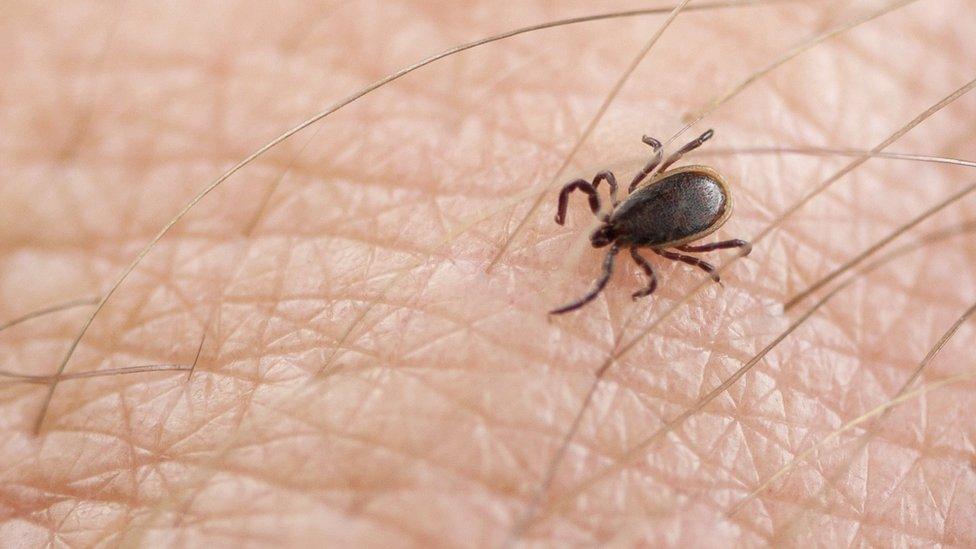
If you have been bitten:
Remove the tick as soon as possible - the safest way is to use a pair of fine-tipped tweezers, or a tick removal tool
Grasp the tick as close to the skin as possible, pull upwards slowly and firmly, as mouthparts left in the skin can cause a local infection
Once removed, apply antiseptic to the bite area, or wash with soap and water and keep an eye on it for several weeks for any changes
Contact your GP if you begin to feel unwell and remember to tell them you were bitten by a tick or have recently spent time outdoors

"Desperate patients want a solution and you can quite understand that," she adds. But there are dangers that people could be persuaded to pay for long-term treatments that are not needed.
The best treatment for people with a clear history of Lyme disease and continued symptoms is not yet known. Some doctors - on both sides of the Atlantic - take a hard line on it and are reluctant to give more antibiotics without stronger evidence, external that they will help. This is especially true when faced with increased antibiotic drug resistance and when long-term intravenous treatment comes with a risk of blood poisoning.
Others argue that there should be more flexibility and that doctors have to discuss clinical judgements with their patients. "It's a very difficult decision," says Dryden. "There do seem to be some patients who respond to longer-term antibiotics but I'm very guarded in who I give them to."
It can be a frustrating position for doctors as well as patients. After spending 18 months out of work due to her illness, Helen Rowe is working again at a clinic in Weymouth and tries to advise GPs on cases that seem similar to hers. "I see the other side of it now as a nurse," she says. "You're damned if you do and damned if you don't."
Subscribe to the BBC News Magazine's email newsletter, external to get articles sent to your inbox.